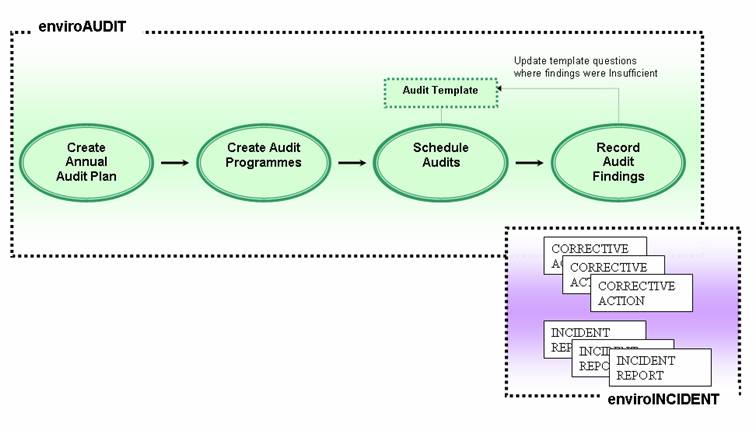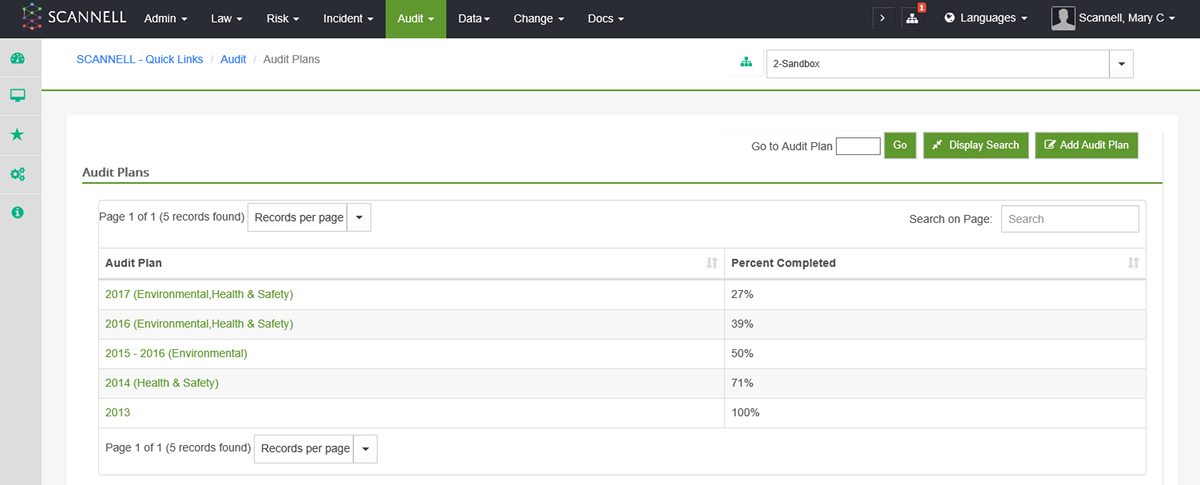

The AUDIT Module of SCANNELL enables organisations to systematically & objectively evaluate the fulfilment of compliance and other criteria set by the organization.
The module is very flexible and can be used to audit many different aspects of an organization's business, not only environmental & health & safety management, but also manufacturing excellence and quality systems. It enables audits to be planned, executed, and (via the INCIDENT module) corrective & preventive actions can be tracked to closure.
Audits can be carried out internally or externally or by a third party.
The system is structured as follows:
•Audit Plans are created yearly and over a range of years. Users can also select business areas to be associated with an audit plan (e.g. H&S, Env.)

§ Each Audit Plan has one or more Audit
Programmes.
§ The Audit Programme is based on a
pre-defined Audit Programme Type (e.g. ISO 9000, ISO 14001, OHSAS
18001, GMP, Supplier Audits, Compliance Audits or Safety
Inspections)
§ A programme may be associated with an
Audit Template (a pre-defined set of questions).
•Each programme has an Audit Schedule, made up of a number of individual Audits, which specifies the frequency of audits, who is responsible for carrying them out (Lead Auditor) and who will be audited (Auditee).
|
|
Scheduled and Express types are available. Scheduled audits are based on textual answers to questions whereas Express ones are based mainly on checkbox selections. |
|
|
Audits can also be made scorable. |
|
|
Audits can be scheduled manually or automatically on a recurring basis. |
|
|
The Auditee may be an employee or a third party such as a supplier or contractor. Employees need to be users in the system and details of third parties can be added under the audit module. |
Audit findings that are deemed to be Non-Compliant result in an Incident being raised automatically in the INCIDENT module under the type ‘Major Non-conformance’.
Audit findings that are raised as ‘Minor Non Conformances’ result in the automatic generation of a Corrective Action in the INCIDENT module.
Incomplete findings result in the generation of an Audit Trail which can be picked up in subsequent Audits.
The percentage completion of an Audit is displayed by the system and is calculated based on the number of findings recorded and closed.